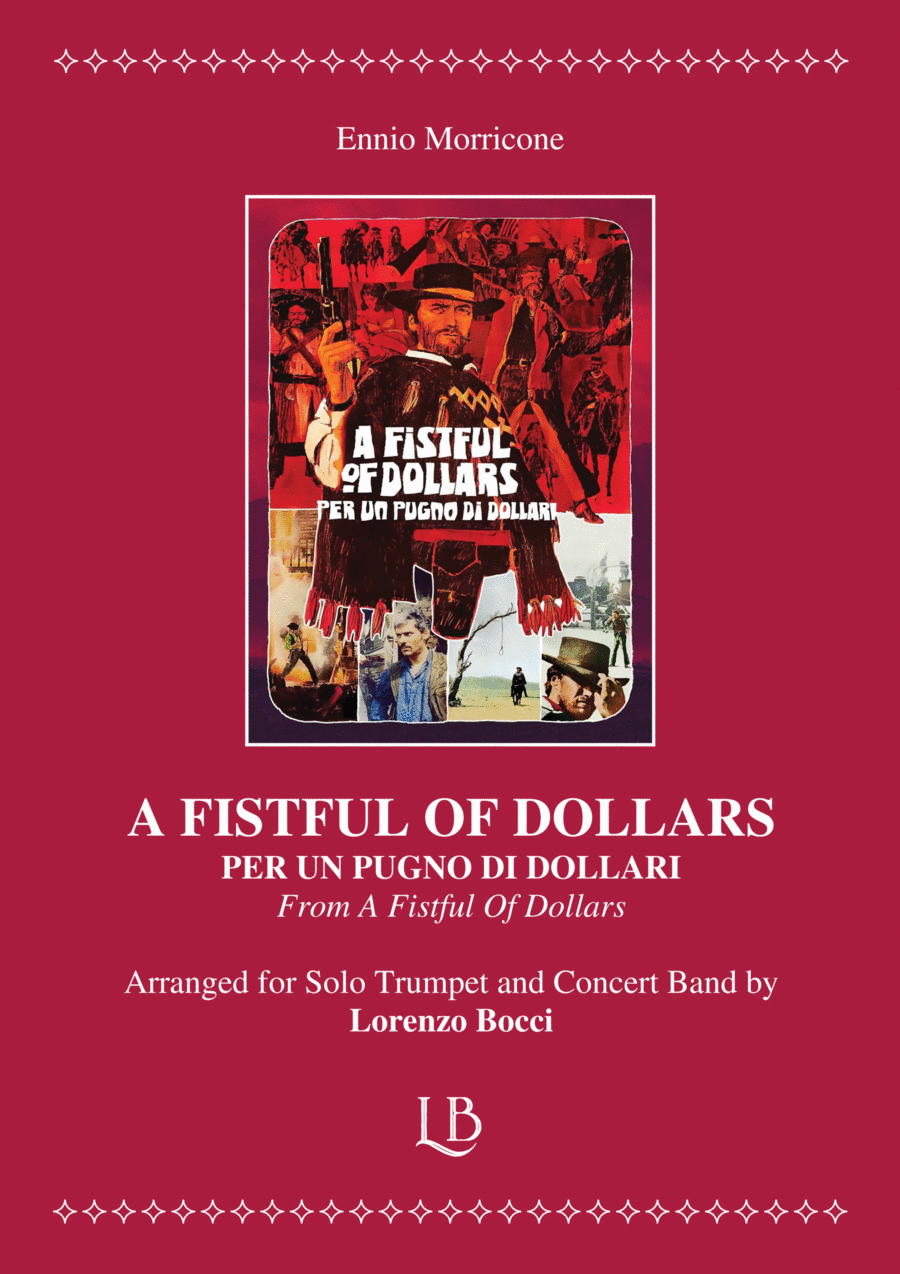Concert Band - Level 2 - Digital Download SKU: A0.1403955 By Ennio Morricone. By Ennio Morricone. Arranged by Lorenzo Bocci. Film/TV. 63 pages. Lorenzo Bocci #987080. Published by Lorenzo Bocci (A0.1403955). A FISTFUL OF DOLLARS (Per un pugno di dollari) From A Fistful Of Dollarsfor Solo Trumpet and Concert Band (with Fanfare Band parts) - Grade 3 - Digital Download Composed by Ennio Morricone. Arranged by Lorenzo Bocci. Film/TV. Concert Band - Blasorchester - Harmonie. For Solo Trumpet and Concert Band. With optional Choir (SATB). Score and parts. With Fanfare Band parts. Duration 1'49''. Published by Lorenzo Bocci.Instrumentation:Full Score, Bb Solo Trumpet, Flute 1, 2, Oboe, Bassoon, Eb Clarinet, Bb Clarinet 1, 2, 3, Bb Bass Clarinet, Eb Alto Saxophone 1, 2, Bb Tenor Saxophone, Eb Baritone Saxophone, Bb Trumpet 1, 2, 3, F Horn 1, 2, 3, Trombone 1, 2, Bass Trombone, Euphonium, Bass, Double Bass, Timpani, Percussion 1 (Bass Drum, Cymbals), Percussion 2 (Snare Drum, Castanets), Guitar, Choir (SATB) (Opt.).Additional Parts:Bb Soprano Saxophone (CB, FA), Eb Horn 1, 2, 3, Bb Trombone 1, 2 T.C., B.C., Bb Bass Trombone T.C., B.C., Bb Euphonium T.C., B.C., Bb Bass T.C., B.C., Eb Bass T.C., B.C.Fanfare Band Parts:Eb Cornet, Bb Flugelhorn 1, 2, 3.A Fistful of Dollars (Per un pugno di dollari) is a film directed by Sergio Leone and starring Clint Eastwood in his first leading role, alongside Gian Maria Volonté, Marianne Koch, Wolfgang Lukschy, Sieghardt Rupp, José Calvo, Antonio Prieto and Joseph Egger. Released in Italy in 1964 and in the United States in 1967, the film initiated the popularity of the spaghetti Western genre. It was followed by For a Few Dollars More and The Good, the Bad and the Ugly, both also starring Eastwood. Collectively, the films are known as the Dollars Trilogy, or the Man with No Name Trilogy. The film's music was written by Ennio Morricone. Sergio Leone requested Morricone to write a theme that would be similar to Dimitri Tiomkin's El Degüello (used in Rio Bravo). Although the two themes are similar, Morricone stated that he used a lullaby that he had composed previously, and developed the theme from that. The song is characterized by a famous trumpet solo, played by the Apulian Michele Lacerenza; it was also released on 45 rpm by RCA Italiana and was one of the best-selling records of the year.Subscribe to my YouTube Channel to stay updated on new releases.
